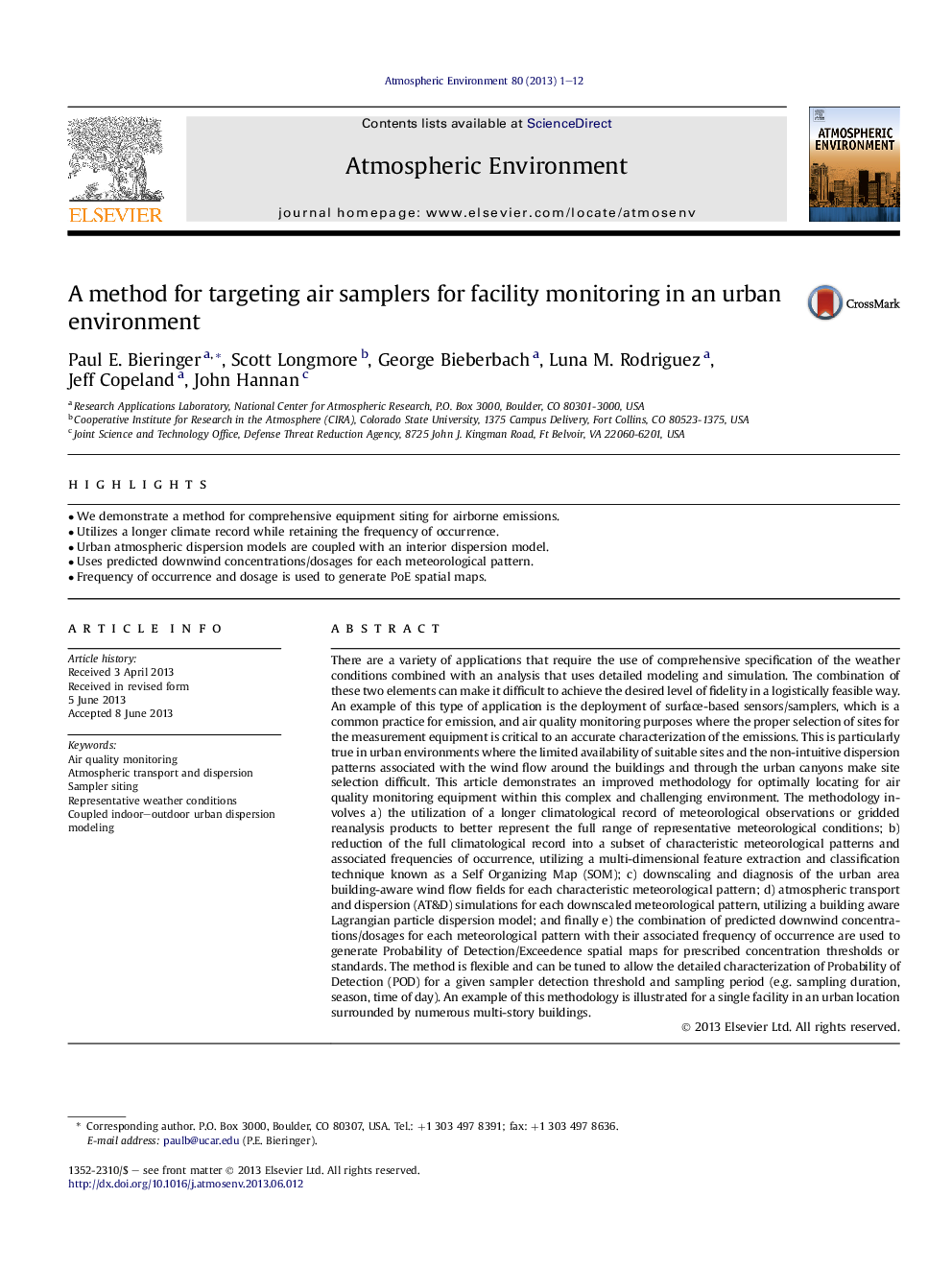| کد مقاله | کد نشریه | سال انتشار | مقاله انگلیسی | نسخه تمام متن |
|---|---|---|---|---|
| 6340605 | 1620391 | 2013 | 12 صفحه PDF | دانلود رایگان |
- We demonstrate a method for comprehensive equipment siting for airborne emissions.
- Utilizes a longer climate record while retaining the frequency of occurrence.
- Urban atmospheric dispersion models are coupled with an interior dispersion model.
- Uses predicted downwind concentrations/dosages for each meteorological pattern.
- Frequency of occurrence and dosage is used to generate PoE spatial maps.
There are a variety of applications that require the use of comprehensive specification of the weather conditions combined with an analysis that uses detailed modeling and simulation. The combination of these two elements can make it difficult to achieve the desired level of fidelity in a logistically feasible way. An example of this type of application is the deployment of surface-based sensors/samplers, which is a common practice for emission, and air quality monitoring purposes where the proper selection of sites for the measurement equipment is critical to an accurate characterization of the emissions. This is particularly true in urban environments where the limited availability of suitable sites and the non-intuitive dispersion patterns associated with the wind flow around the buildings and through the urban canyons make site selection difficult. This article demonstrates an improved methodology for optimally locating for air quality monitoring equipment within this complex and challenging environment. The methodology involves a) the utilization of a longer climatological record of meteorological observations or gridded reanalysis products to better represent the full range of representative meteorological conditions; b) reduction of the full climatological record into a subset of characteristic meteorological patterns and associated frequencies of occurrence, utilizing a multi-dimensional feature extraction and classification technique known as a Self Organizing Map (SOM); c) downscaling and diagnosis of the urban area building-aware wind flow fields for each characteristic meteorological pattern; d) atmospheric transport and dispersion (AT&D) simulations for each downscaled meteorological pattern, utilizing a building aware Lagrangian particle dispersion model; and finally e) the combination of predicted downwind concentrations/dosages for each meteorological pattern with their associated frequency of occurrence are used to generate Probability of Detection/Exceedence spatial maps for prescribed concentration thresholds or standards. The method is flexible and can be tuned to allow the detailed characterization of Probability of Detection (POD) for a given sampler detection threshold and sampling period (e.g. sampling duration, season, time of day). An example of this methodology is illustrated for a single facility in an urban location surrounded by numerous multi-story buildings.
Journal: Atmospheric Environment - Volume 80, December 2013, Pages 1-12
